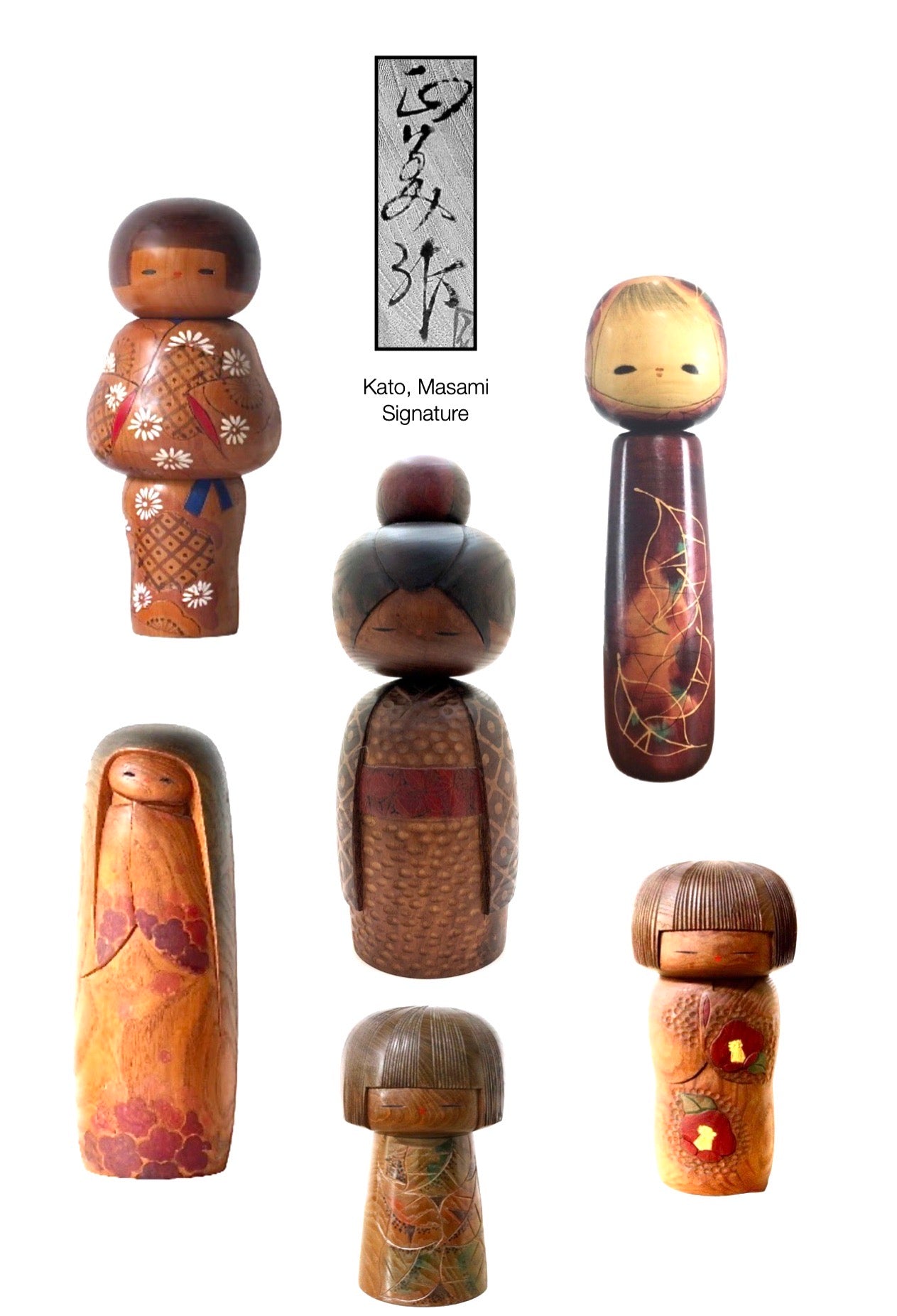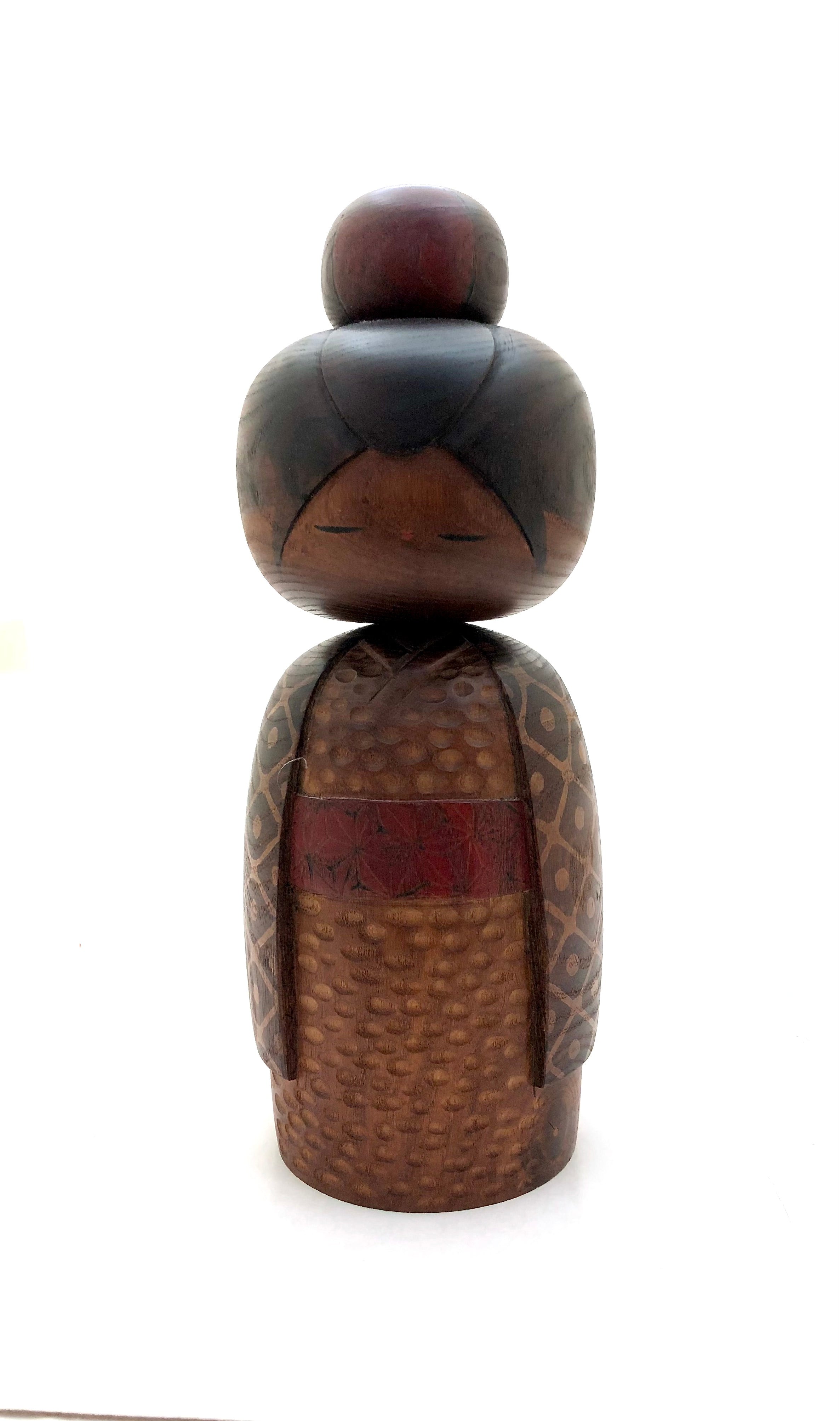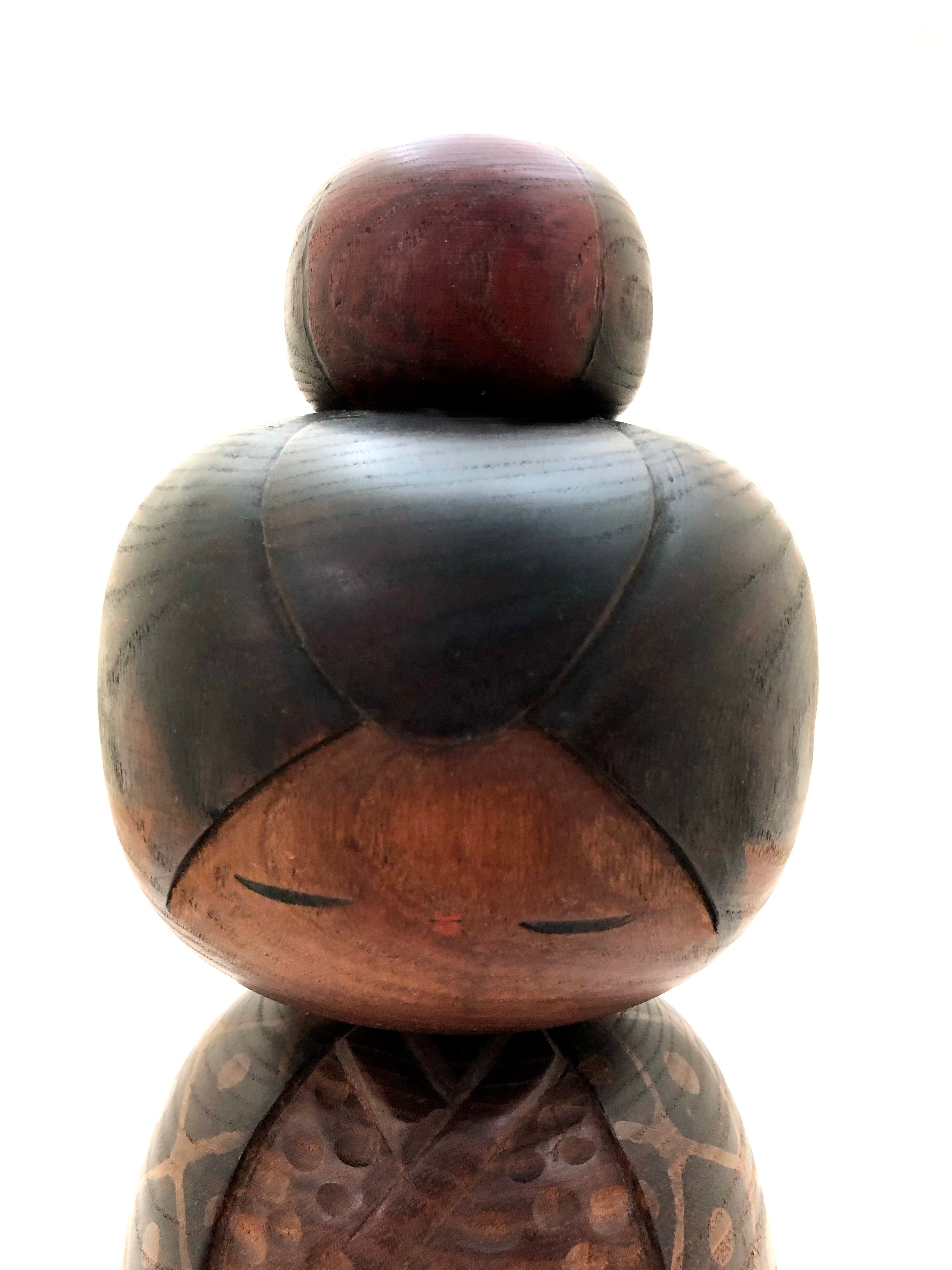
Artisan | Woodworker: Kato, Masami | 1925-
Biographical History:
Masami is the wife of Kato, Shinichi, who is a Narugo traditional artist. She was born in Narugo, Miyagi Prefecture, and has received many prizes including the Prime Minister’s Award. The featured doll in the center is named “Akikusa | Autumn”.
In researching old writings through articles and books in our written and image library, it is evident that the Kokeshi Craftsperson kept cultural values, customs, and fashion alive through the extensive representations of Kokeshi dolls. Artists always felt that the beauty was in the doll and not the signatures, for most masters, never signed their dolls during the earlier period of Kokeshi making for they were not yet sold internationally and locals knew the craftsmen. Later the artists named and signed the dolls, but only when Westerners insisted on signatures because they did not know the artists, for the carvers wanted to promote sales to make a living, during the seasons that did not provide an environment to continue their otherwise daily work. A valued customer and collector wrote us and noted regarding buying that “Kokeshi collecting is a personal journey in this everlasting realm of Japanese esthetics” which supports our theory. DF
Collector's note – descriptive qualities, standard characteristics & ornamentation styles:
The center doll from what we understand is a rare one-off doll created in 1960 by this artist and the others were purchased through her years of production. To date, we have not seen another such as her first creation, and feel this doll was an effort by Kato-san to begin her understanding of Kokeshi's design and making from her husband, who influenced the Traditional Narugo Family of dolls. We understand that this particular doll has transitional "details and elements" that do not follow the regimented requirements dictated by the traditional family craftspersons. She incorporated several hairstyles and in most of her dolls executed them with wonderful real-life carvings such as an oversized “Mage” and the traditional hairstyles all beautifully detailed. The painted work on all of her dolls is enhanced by the hand-carving of the garments, adding a three-dimensional element to all of her pieces. Each doll in this visual image summary is beautifully rendered celebrating a traditional person on a typical day in the life of Japanese women.


